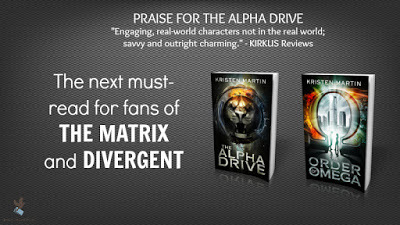World-building 101
Hey guys, welcome back! Today’s post is going to be on a highly requested topic, one that I receive many, many emails on, and that is: world-building. Hopefully I answer your guys’ questions about world-building in one fell swoop with this post. If you'd rather watch the video on this topic, feel free to click play below. Otherwise, read on!
Before we dive into how to build the world in your story, it’s crucial to understand what world-building is. World-building is more than the clothing your characters wear, the languages they speak, and the shape and size of the terrain surrounding them. It even goes beyond magic and political systems. World-building means you, as the author, have the sense of a bigger universe, and that you portray that in your writing. The sense of a bigger universe? Well, what does that mean? It means there’s a sense of more , that you’ve diligently thought through the entire world you’ve created and refined it as much as possible. World-building encompasses every assumption and belief your characters hold, spoken and unspoken, and that means it ultimately determines both their decisions, actions, and reactions.
World-building is a crucial step for any genre. It’s easy to tell when an author doesn’t bother with world-building because the story doesn’t feel authentic. It doesn’t feel genuine. It doesn’t feel real – like it could actually happen. Your readers need to be able to step into the story and live there. A bonus of world-building is that you open up the possibilities for a series, because you have a whole world you’ve created and can play with, so you really have endless stories.
Because world-building has many different components, this video could go on for hours and hours, so this is really going to be an overarching view, and in my opinion, a very practical way, to start the world-building process. There are really two ways in which you can world-build: from the outside in, or from the inside out. From the outside in means tackling the history, geography, politics, gender delineations, etc. first. This means considering economic weirdness like bees migrated four years ago so how would that affect the price of honey, or the distance between countries and the travel time required. Once you’ve created the world, then you have an idea what kind of people can live in it, even if they don’t fit into the world or understand it fully. Or you can world-build From the inside out meaning you start with the characters themselves, paying attention to the tiny, weird ways they live their lives, and you let that tell you piece by piece the way their world HAS to work. From the inside out is my favorite method, and it’s the one I used to build my dark fantasy world.
So, now let’s talk about 5 major things to consider when world-building. These will work no matter which route you choose (outside in or inside out), but you may have to switch these steps around a little bit to fit your process. Okay, let’s get to it:
1. Target Audience and Genrea. This may seem obvious, but it’s something that does get overlooked when writers begin to build their world. If you’re writing a middle grade novel and your political system is inexplicably detailed to the point where it’s going to cause confusion for an adult, you can bet that a 9 year-old is probably going to slam your book shut after the first few pages and fling it across the room. Along the same lines is genre. If you’re writing a scifi novel, then most likely, your world is going to have gadgets and other technological items that don’t exist in the present day. In a fantasy world, you’re likely to have mythical creatures or magic systems. Even in historical novels, whether you’re writing a setting similar to the Wild Wild West or the Prohibition Era, you’re world-building. Contemporary novels also have an element of world-building, although they may not require as much creativity as scifi or fantasy worlds, you still have to determine what technology is relevant, how the characters will speak to one another, how they will behave, how they’re being governed, and so on.
2. Your Charactersa. Hopefully you’ve already created your character profiles, but even if you haven’t, that’s okay. Sometimes it’s easier to build your world based on the characters you’ve created. For my dark fantasy series, I actually had all of my characters fleshed out before I truly focused on world-building. The neat thing here is that since I had my characters mapped out, I already knew what their backgrounds and history were, so that helped me create the village or town they came from and what types of animals and creatures existed. It also helped me determine how many regions needed to be in my world, the types of climates, transportation, and a load of other things. By understanding who my characters are and their relationships with one another, I was already world-building without even trying!
3. Create a preliminary mind map of your worlda. For a lot of writers, this means mapping out everything in the realm of possibility in their world. Maybe everyone travels on hovercrafts instead of cars because their was an oil and gas crisis in the past; maybe there are strange species of birds flying in the air due to a new strain of bird flu. Maybe your world is underwater and somehow your characters have developed a way to breathe, if they’re human, or maybe not if they’re a different species. By mapping out your world, you subconsciously setting limits on it, which is a good thing. In a sense, you’re teaching yourself what can happen and what can’t in the world you’ve conjured up. I like to draw out a map of my world and fill in the oceans, lakes, mountains, villages, caves, etc. Mapping our your world, both geographically and in a more abstract way, is incredibly helpful when it comes to writing your story. I can’t even tell you how many times I had to refer to my map to make sure my characters could get from one place to another by ship, or if they had to use another form of transportation. Writing down all the facets of your world can help keep you in line when writing your story. And don’t think it’s set in stone. If you need to change something, you can, as long as it makes sense and doesn’t contradict another part of your world. Or maybe it can contradict another part of your world because that’s our conflict! Isn’t mind-mapping great?!
4. Fill in the missing piecesa. As you start writing your story, there are undoubtedly going to be things that pop up that maybe you hadn’t considered during your mind mapping phase. And that’s perfectly normal. Some examples are: i. Planet selection1. Hopefully you thought about the planet your world exists on, but perhaps it slipped your mind. If your planet is a lot like Earth, then you’re probably okay. But if you’re writing about different galaxies, you may want to revisit the planets (or create new ones) and types of life each one has. ii. Histories and Lore; Legends and Myths1. The history of your political or magic system may be something you’ve overlooked. Are there any legends and myths that tie in? Certain pieces of background information may be really important for the reader to be aware of in order for your world to make sense. iii. Magic System1. If you decided to have magic in your world, hopefully you’ve mapped out exactly what that magic system is. What is plausible and implausible? And if you haven’t, it’s probably a good time to figure it out. iv. Political/Governance System1. Are you writing a dystopia? Is there a dictator? Is it a democracy? Are there kings and queens? What are the laws? Is anything forbidden, and if so, why? Your characters have to have something to follow when it comes to rules, otherwise the “conflict” you create may not be seen that way. v. Society Structure (Language, Industry, Agriculture, and Trade)1. Are there upper, middle, and lower classes? Is it a socialist structure? Or is it a free-wheelin’ free-ballin’ every-man-for himself type of society? What industries are present? How do the people eat? Do they grow their own crops, do they trade? What languages do they speak? Understanding the inner workings of your society will make the world feel that much more real for the reader. vi. Warfare and technology1. What types of weapons exist? Is technology nonexistent? Are there armies and militaries? Who are their allies and where does the loyalty lie? Or does everyone fend for themselves? In many scifi and fantasy stories, we tend to reach a sort of “epic battle” near the end, so understanding warfare and technology is critical for the reader.
I’m sure there are many more things we can consider in our worlds, but this is a short list to get you started. Some things may even come up for some writers that won’t come up for others. Our stories are all unique, so my advice is to just roll with it and map it out anyway, even if it doesn’t fully make sense yet.
5. Know what information to leave outa. A good writer will give the reader just enough information to leave them satisfied, but still allow them to use their imagination. For example, let’s say that in the past, one of the regions in your world disappeared into the black hole that is the Bermuda triangle. Crazy! But if this has no effect on your characters now—if it doesn’t touch their daily lives or change the way their systems work or change anything at all—then your readers don’t really need to know. You can know. Your readers don’t need to, at least not in that book. You don’t want to overload your reader with information about your world. Don’t do an info-dump or a prologue where you give the entire background of your world. Instead, find ways to discreetly weave it into your story. It will make it more believable, and your reader will feel as though they’re experiencing these facets of the world along with your character, which is exactly what you want.
So there you have it, an overarching view and practical guide to world-building. I hope you enjoyed the post today.
Don't forget to check out both of my book on your way out. I'll see you guys in the next post!


Published on January 31, 2017 05:58
No comments have been added yet.



